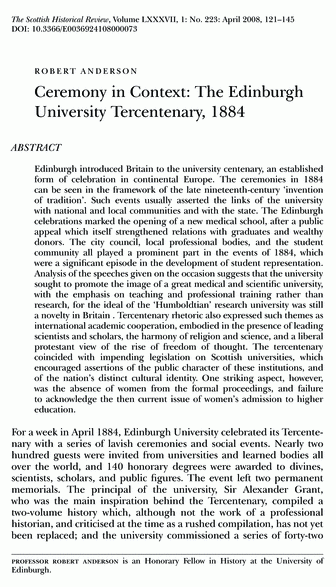Edinburgh introduced Britain to the university centenary, an established form of celebration in continental Europe.
The ceremonies in 1884 can be seen in the framework of the late nineteenth century ‘invention of tradition’. Such events usually asserted the links of the university with national and local communities and with the state.
The Edinburgh celebrations marked the opening of a new medical school, after a public appeal which itself strengthened relations with graduates and wealthy donors.
The city council, local professional bodies, and the student community all played a prominent part in the events of 1884, which were a significant episode in the development of student representation. Analysis of the speeches given on the occasion suggests that the university sought to promote the image of a great medical and scientific university, with the emphasis on teaching and professional training rather than research, for the ideal of the ‘Humboldtian’ research university was still a novelty in Britain.
Tercentenary rhetoric also expressed such themes as international academic cooperation, embodied in the presence of leading scientists and scholars, the harmony of religion and science, and a liberal protestant view of the rise of freedom of thought.
The tercentenary coincided with impending legislation on Scottish universities, which encouraged assertions of the public character of these institutions, and of the nation’s distinct cultural identity. One striking aspect, however, was the absence of women from the formal proceedings, and failure to acknowledge the then current issue of women’s admission to higher education.
Edinburgh University: A Sketch Of Its Life For 300 Years (1884)

